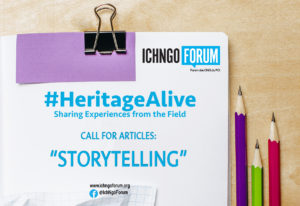In order to receive more contributions, the #HeritageAlive Editorial board have decided to extend the deadline for submission of articles on Storytelling to November 20.
Call for Articles: Storytelling
At 16.COM in Paris, the #HeritageAlive Editorial Board chose “storytelling” as the topic for the next book in the Living Heritage Series. The new book will be published with the assistance of ICHCAP and will be ready by the end of 2023 to be presented at 18.COM.
The main purpose of the articles is to reflect NGOs’ and experts’ experiences from the field while working on projects related to storytelling. Rather than solely presenting an ICH element, the articles should reflect the challenges, methodologies, and experiences in safeguarding and transmission and in the spirit of the 2003 Convention to emphasize the element’s social and cultural function for a group or community. In other words, the submitted text must be about the achievements in safeguarding ICH through specific projects or activities (the evolution of a given situation). As the main purpose of #HeritageAlive is to share experiences from the field, the articles shall preferably be made by, or in cooperation with, the NGOs and practitioners concerned. All NGOs are encouraged to contribute.
Details
Language: English or French
Word count: 1,500 to 2,000
Deadline: November 20th 2022
Submissions: eivind.falk@handverksinstituttet.no (Eivind Falk, Editor-in-Chief) with a copy to direction@patrimoinevivant.qc.ca (Antoine Gauthier)
Other information:
The articles should include a 400-word summary/abstract. The submitted manuscripts should not include images; image files will be requested at a later date. For citations, we recommend the Harvard style. See https://www.myperfectwords.com/blog/citation-styles/harvard-style-citation for information. Below are two examples.
In-text citation: (Shriver and Atkins, 1999, p.12)
Bibliography citation: Shriver, D.F. and Atkins, P.W. (1999). Inorganic Chemistry. 3rd ed. Oxford: Oxford University Press.
The authors must proofread the text before submitting. Documents with excessive misspellings and grammatical issues will be returned.
Délai prolongé pour le Storytelling
Afin de recevoir plus de contributions, le comité éditorial de #HeritageAlive a décidé de prolonger la date limite de soumission des articles sur le Storytelling au 20 novembre.
Appel à articles: le conte
Lors de la réunion 16.COM à Paris, le comité éditorial de #HeritageAlive a choisi le conte comme sujet du prochain livre de la série Patrimoine vivant. Le nouveau livre sera publié avec la contribution de l’ICHCAP et sera prêt d’ici la fin de 2023 en vue d’être présenté à 18.COM.
L’objectif principal des articles est de refléter les expériences des ONG et des experts sur le terrain tout en travaillant sur des projets liés à l’art de conter ou aux récits traditionnels. Plutôt que de présenter uniquement un élément du PCI, les articles doivent refléter les défis, les méthodologies et les expériences en matière de sauvegarde et de transmission, dans l’esprit de la Convention de 2003, à dessein de souligner la fonction sociale et culturelle de l’élément pour un groupe ou une communauté. En d’autres termes, le texte soumis doit porter sur les réalisations en matière de sauvegarde du PCI à travers des projets ou des activités spécifiques (l’évolution d’une situation donnée). L’objectif principal de #HeritageAlive étant de partager des expériences de terrain, les articles seront de préférence rédigés par, ou en coopération avec, les ONG et praticiens concernés. Toutes les ONG sont encouragées à contribuer.
Détails
Langue: français ou anglais
Nombre de mots: 1500 à 2000
Date de tombée: 20 Novembre 2022
Pour soumettre un article: eivind.falk@handverksinstituttet.no (Eivind Falk, rédacteur-en-chef) avec en copie direction@patrimoinevivant.qc.ca (Antoine Gauthier)
Général:
Les articles proposés doivent comprendre un résumé d’environ 400 mots. Ils ne doivent pas présenter d’images; celles-ci seront demandées plus tard le cas échéant. Pour les citations, nous recommandons le style Harvard. Voir https://www.myperfectwords.com/blog/citation-styles/harvard-style-citation . Voici deux exemples:
Citations dans le corps du texte: (Shriver and Atkins, 1999, p.12)
Bibliographie: Shriver, D.F. and Atkins, P.W. (1999). Inorganic Chemistry. 3rd ed. Oxford: Oxford University Press.
Les auteurs doivent relire attentivement le texte avant de le soumettre. Les documents comportant des fautes d’orthographe excessives ou des problèmes de grammaire seront retournés.


